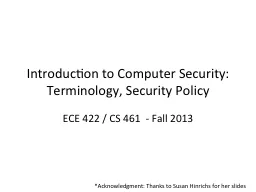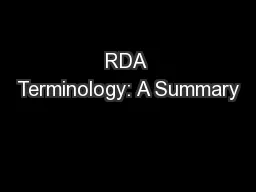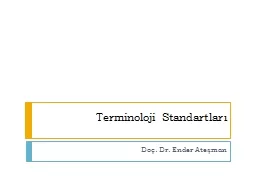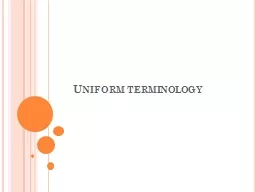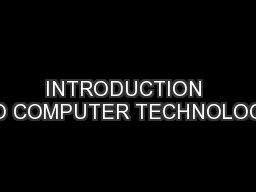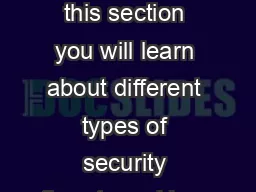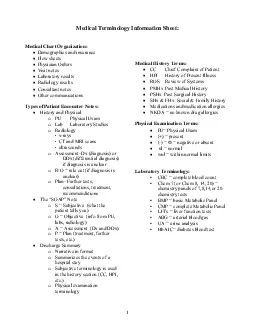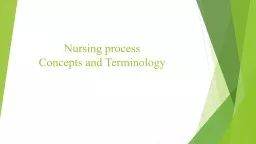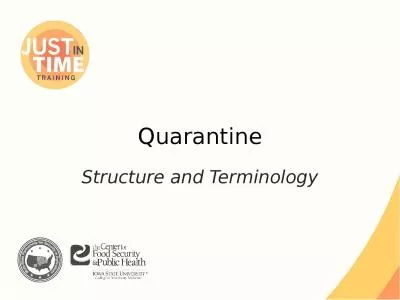PPT-Introduction to Computer Security: Terminology, Security Po
Author : lindy-dunigan | Published Date : 2017-08-18
ECE 422 CS 461 Fall 2013 Acknowledgment Thanks to Susan Hinrichs for her slides Outline Administrative Issues Class Overview Introduction to Computer Security
Presentation Embed Code
Download Presentation
Download Presentation The PPT/PDF document "Introduction to Computer Security: Termi..." is the property of its rightful owner. Permission is granted to download and print the materials on this website for personal, non-commercial use only, and to display it on your personal computer provided you do not modify the materials and that you retain all copyright notices contained in the materials. By downloading content from our website, you accept the terms of this agreement.
Introduction to Computer Security: Terminology, Security Po: Transcript
Download Rules Of Document
"Introduction to Computer Security: Terminology, Security Po"The content belongs to its owner. You may download and print it for personal use, without modification, and keep all copyright notices. By downloading, you agree to these terms.
Related Documents

